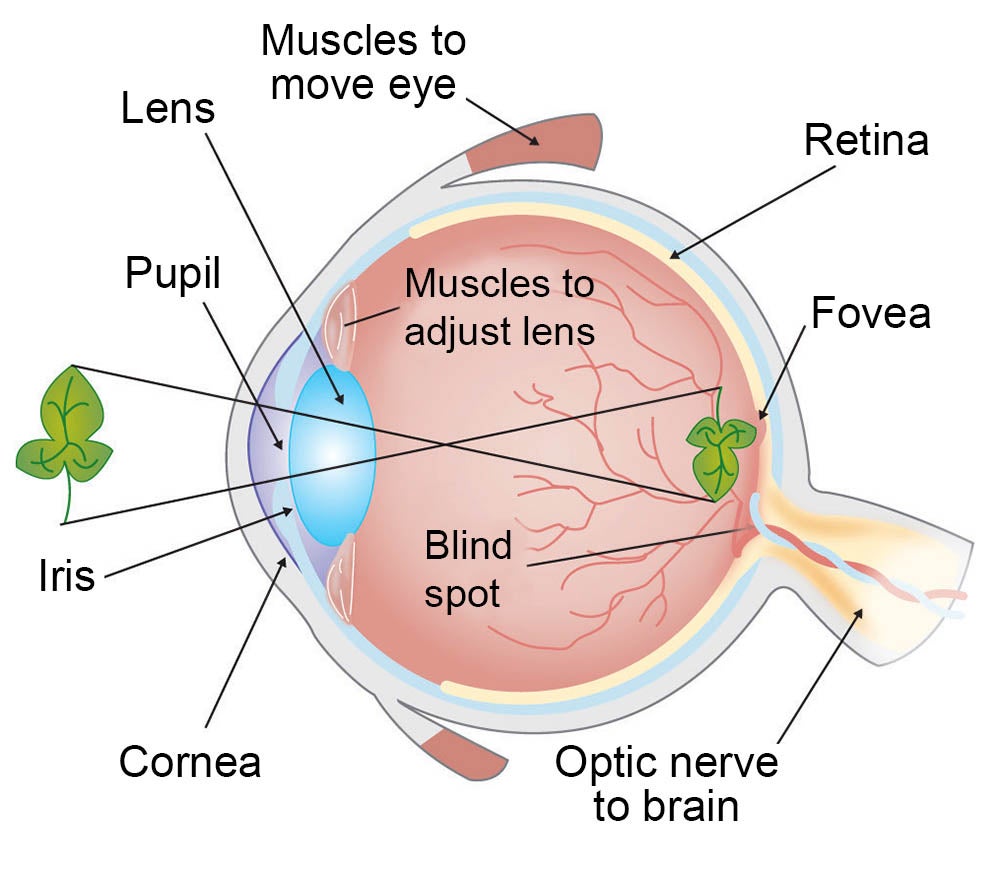 |
| From Ask a biologist |
Vision
The eye is a fascinating and complicated organ that we can learn more about through some simple experiments. Check out the links below to have some fun exploring how your eyes work and why we may not actually see things as clearly as we might like to think!
Peripheral vision
When we see something “out of the corner of our eye”, we mean
we are seeing something in our peripheral vision. Peripheral
Vision | Science Snacks offers four short videos where you can learn more
about peripheral vision and do an experiment to test just how well you can see
things that are not directly in front of you.
The Bind Spot
You might have heard about the blind spot before. This is
the part of our eye where the optic nerve leaves the eye; this means that there
are no photoreceptors there to respond to light. For a quick way to “see” this,
check out the image below from
“Close your right eye. With your left eye, look at the +.
You should see the red dot in your peripheral vision. Keep looking at the +
with your left eye. The red dot will move from the left to the right and
disappear and reappear as the dot moves into and out of your blind spot.”
There are lots more fun activities related to vision (an our
other senses) at the
Neuroscience for Kids page.
Averted Vision
This is when we purposely use our peripheral vision so that we can see better.
This is when we purposely use our peripheral vision so that we can see better.
Well, when it’s dark, looking directly at something doesn’t really work because the photoreceptors in our central vision are of the type that detect color so, if it’s dark, we may not see anything. In our peripheral vision, we use the photoreceptors that pick up black and white which is far better for seeing things in low light conditions. Pilots, hunters, and astronomers all use their peripheral vision to see things at night.

No comments:
Post a Comment